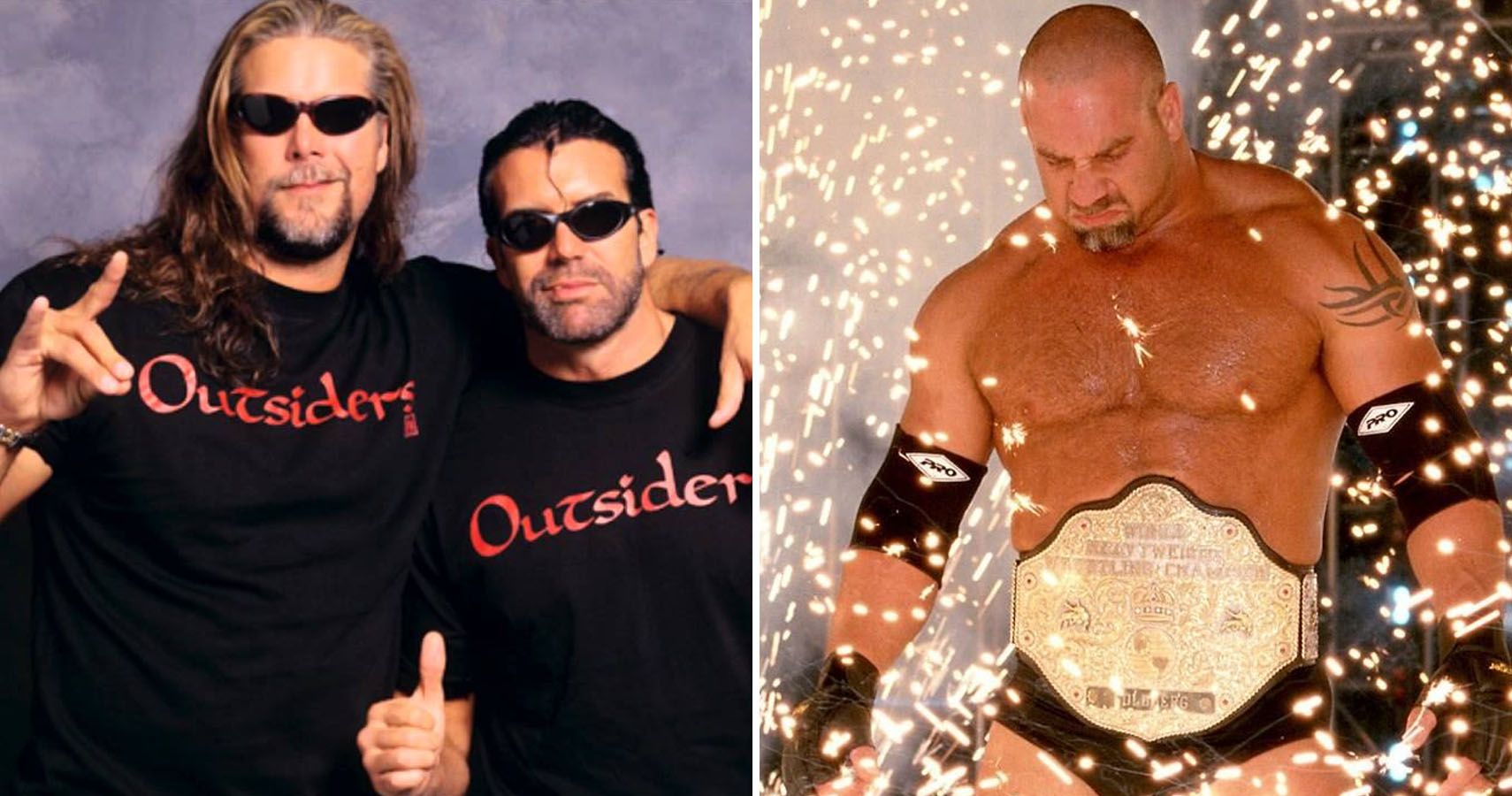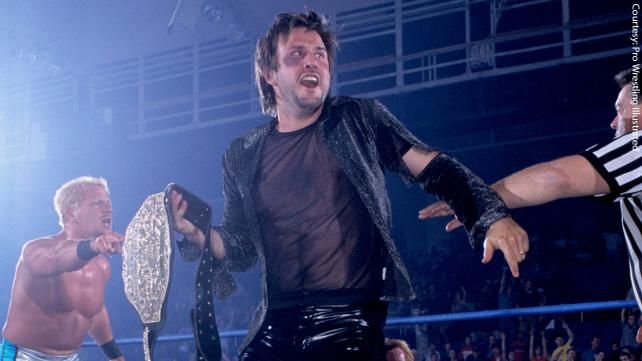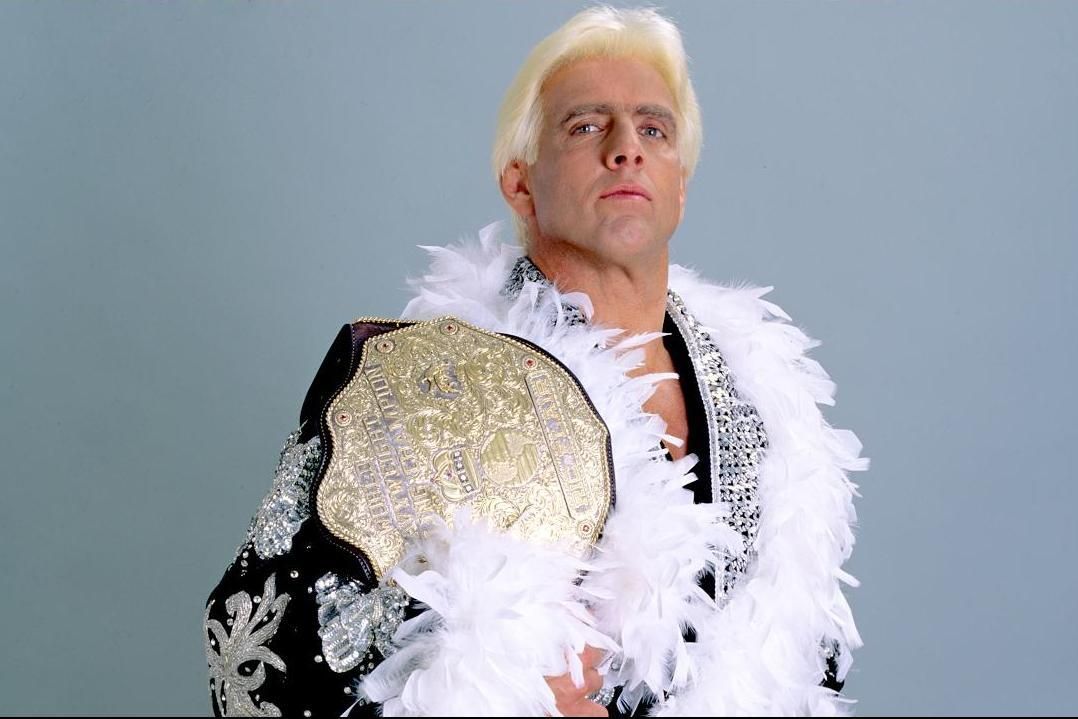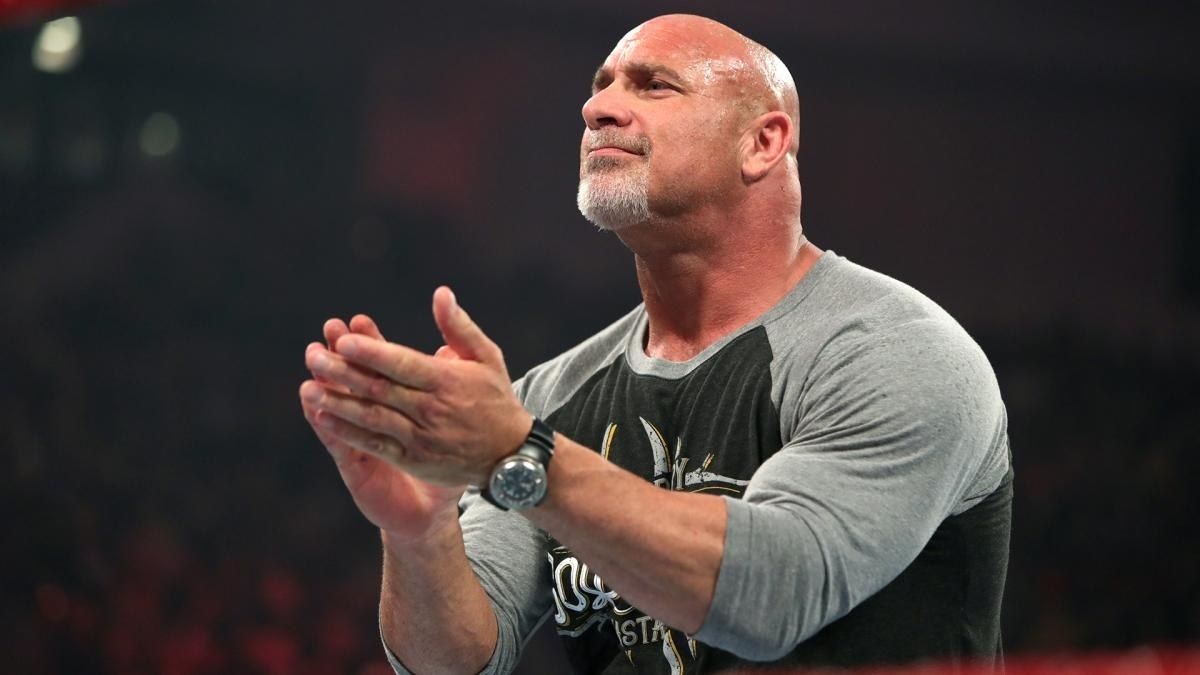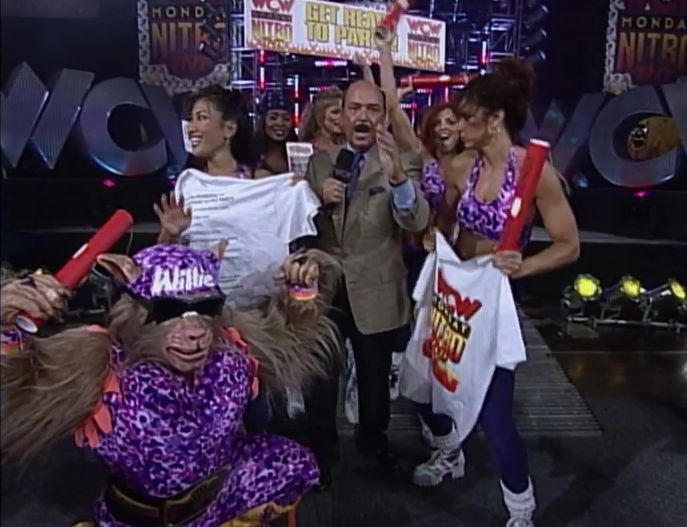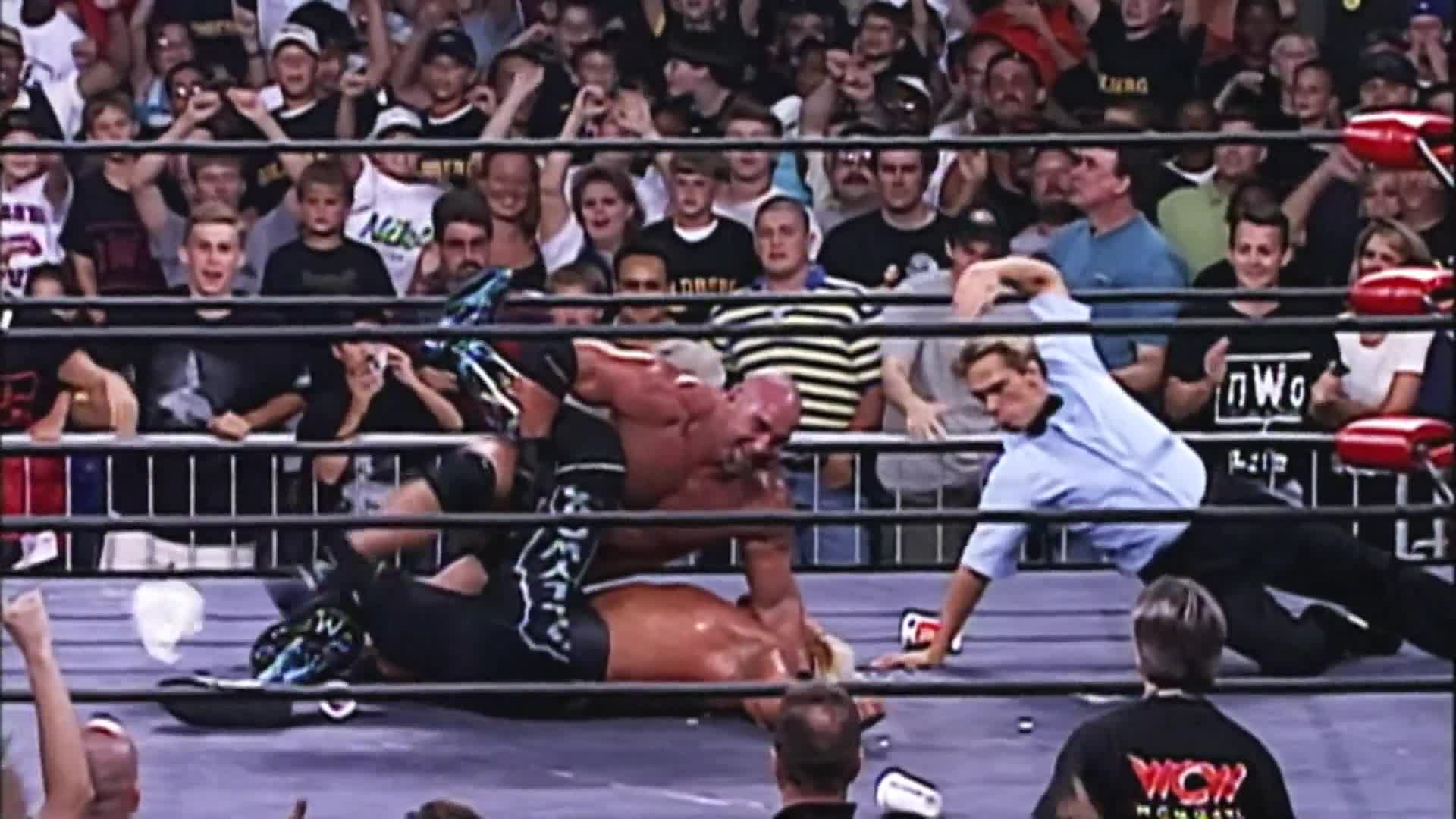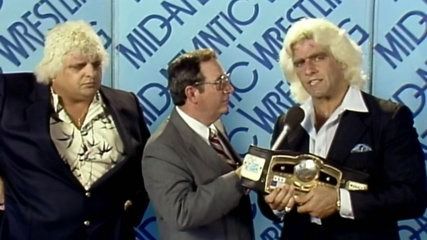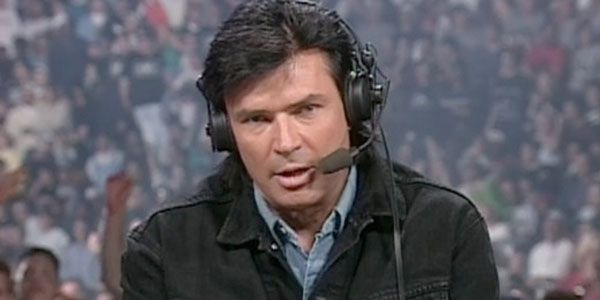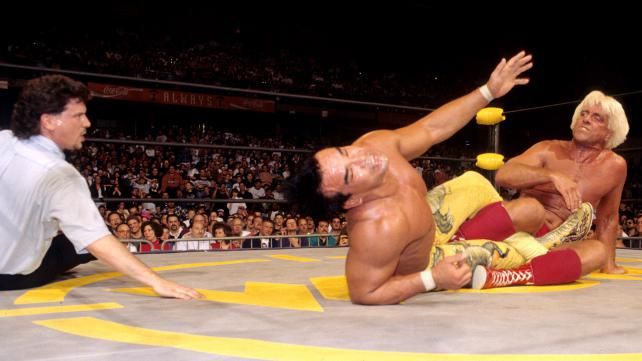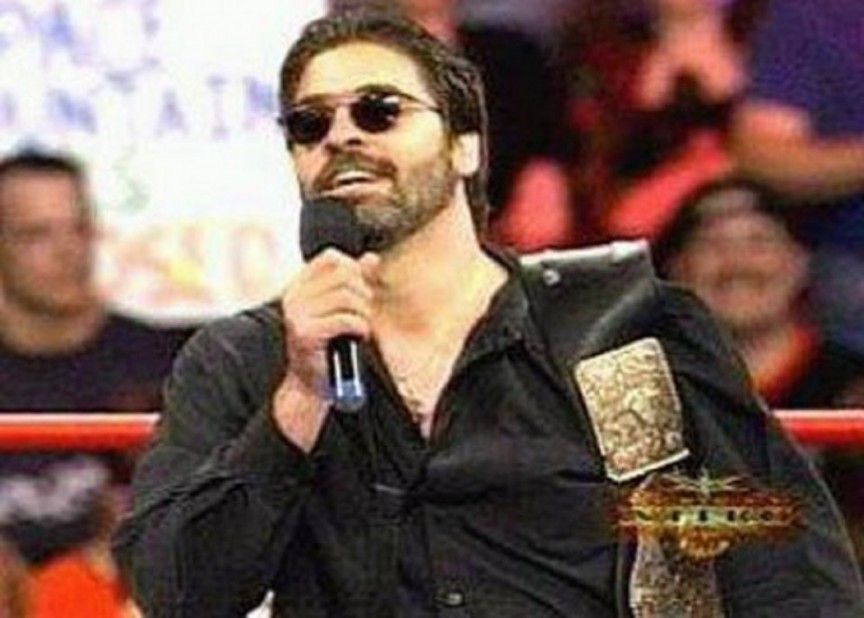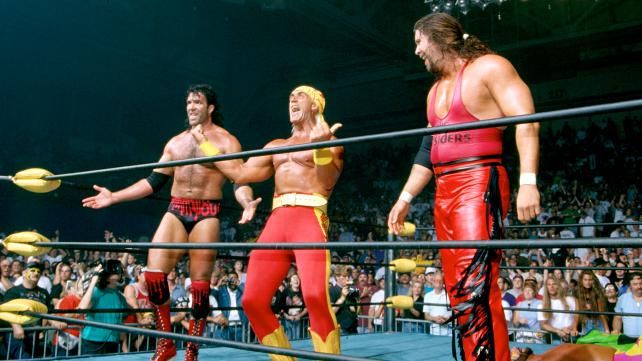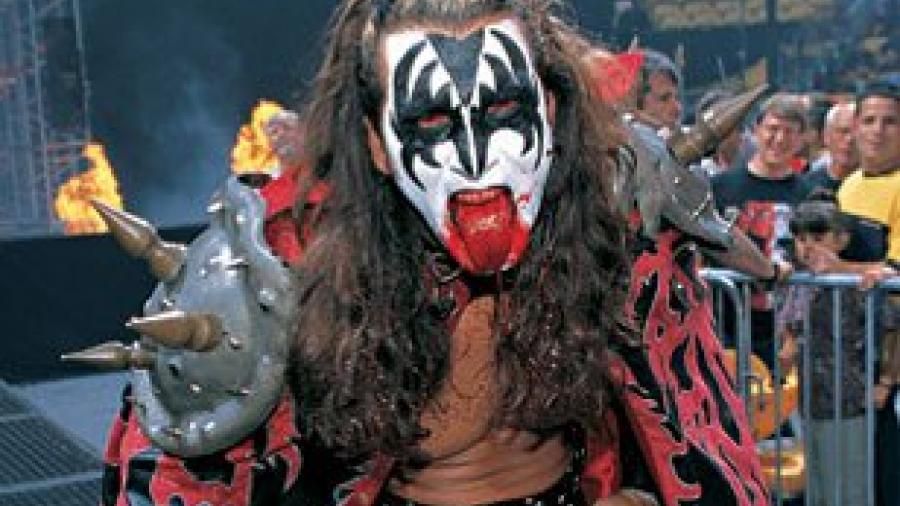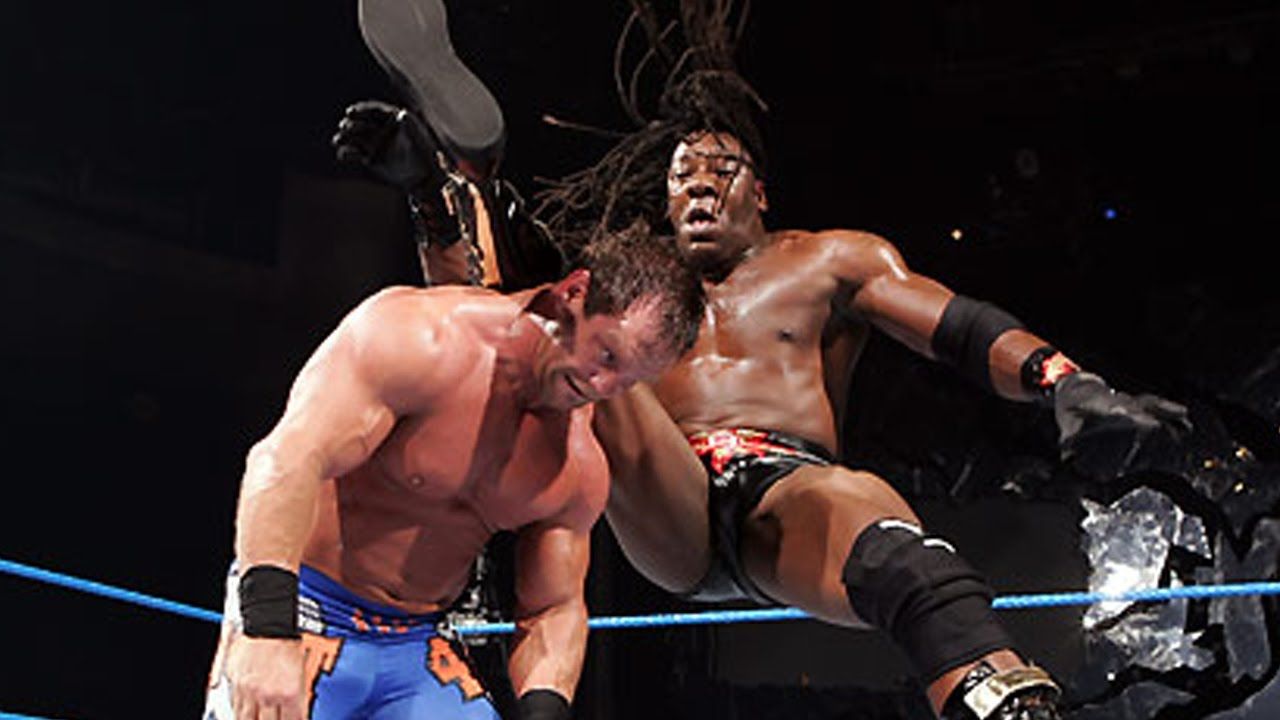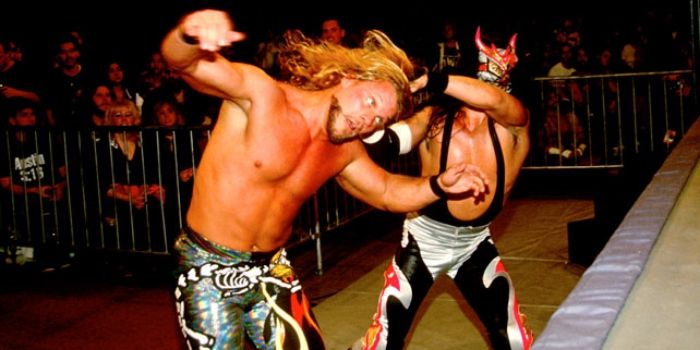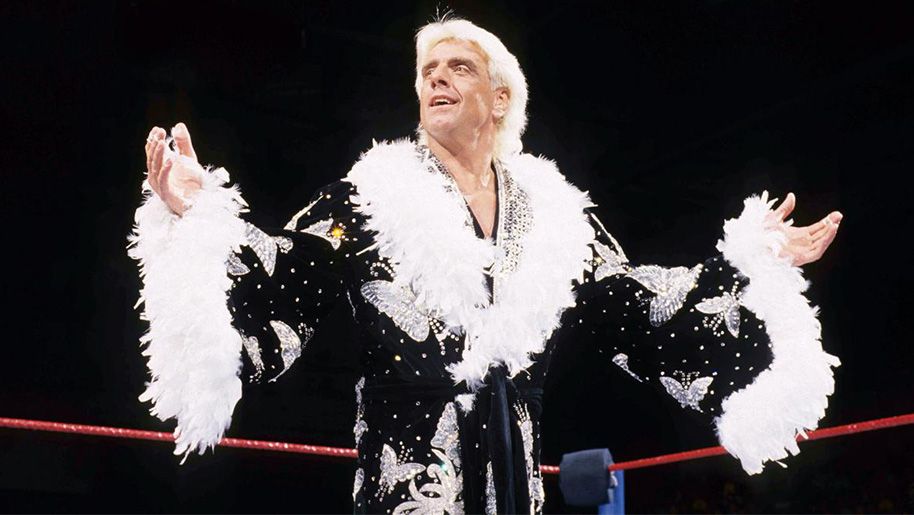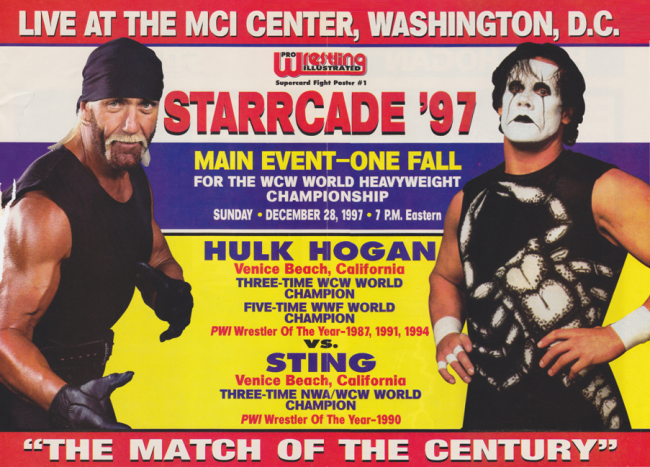WCW Monday Nitro beat the WWE's RAW for 84 straight weeks in TV ratings. The Atlanta-based company hit a rhythm it had never found previously, and continually bested its rival week after week. What was WCW's formula on Monday nights? Hot angles, exciting action, pay-per-view quality matches and former WWE wrestlers that still had star power. Oh, and there was the N.W.O.
But for everything great WCW did in the late 1990s, there were far more failures during the company's existence than success. That isn't to say WCW wasn't great to watch, because even in its worst of times, WCW was entertaining. However, near its death, WCW got to a point that the company was just impossible to follow thanks to its constant swerves and ridiculous storylines created by Vince Russo.
The death of WCW killed wrestling in many ways. The business just isn't the same nowadays, and the lack of competition means the WWE doesn't have to do anything more than what it already does. That is a real shame, because every other wrestling promotion is just copying Vince McMahon's show. At least Eric Bischoff and company attempted to be different. In the end, it just didn't work out, but the amount of newer wrestling fans wanting to see the old WCW Nitro episodes is proof they did something right.
15 15. Bad: David Arquette As Champion
A lot of people who have worked in wrestling don't see a problem giving someone like David Arquette a world title. To them, a belt is just a prop. But that mentality completely belittles the fans who follow the sport. There is nothing worse than a wrestling promotion demeaning a championship and making it meaningless (I'm looking at you, WWE). WCW did just that in 2000 when Arquette won the WCW World Heavyweight title. During his time as champion, Arquette was used as comic relief, which meant the belt was something to laugh at. It killed the prestige that the WCW title had. Of course, many would say, wrestling is fake anyway, so who cares? The fans who pay their hard-earned money care. Those are the same fans that walked away from wrestling when WCW closed in 2001, and those fans haven't returned.
14 14. Good: Heel Champions
The WWE was known as a promotion that preferred face champions. In contrast, WCW preferred heels to carry the belt. Why did WCW prefer heels? Simple, the good guy had to chase the bad guy, and people paid to see the good guy triumph over evil. The dastardly heel could beat and bloody the good guy for months, and fans would come back for more just to see the face finally win. Watch any of the old NWA or WCW events with Ric Flair defending the belt against Dusty Rhodes, Sting or Lex Luger and you will see fans so full of excitement they are about to burst. Perhaps WCW kept the World Heavyweight title on heels far too long. Look back at the variety of WWE bad guys that challenged Hulk Hogan in the 1980s, and you may not remember too many. Remember the babyfaces that chased Flair, and those wrestlers have a lasting legacy.
13 13. Bad: Beating Goldberg
A lot of wrestlers, announcers and pundits look back on WCW and see the beating of Bill Goldberg's streak as one of the chief reasons the company began to spiral out of control. It wasn't the main reason, but it didn't help when the company killed its biggest babyface. Not only was Goldberg the biggest star, but he was one of the few wrestlers created by the promotion. The bald headed, black trunk wearing bruiser was a WCW creation, and they killed his aura by ending the streak at 173-0. How did WCW kill Goldberg and wrestling? Only by having head booker Kevin Nash beat him at the company's biggest event, Starrcade, when Scott Hall used a cattle prod to shock Goldberg unconscious prior to Nash pinning him. It was pure stupidity.
12 12. Good: Nitro Parties
In the late 1990s as The Monday Night Wars raged on television screens, WCW promoted Nitro Parties. The idea was for fans around the United States to get together for a wrestling watch party. It was a great idea that brought fans together as if Monday Nitro was a major sporting event. It was an innovative marketing idea that coincided with Bill Goldberg's rise as the company's top babyface. It wasn't just wrestling fans, hardcore or casual, that attended the parties. It brought thousands of non-wrestling fans to television screens, and exposed them to WCW. For some, it reminded them of what they grew up watching in late 1980s on WWE television. For others, it was a chance to experience the attitude of the N.W.O.
11 11. Bad: Pay-Per-View Quality Matches On Monday Nights
Fans loved seeing the best of the best in WCW go at it on Monday Nitro. But the problem with having pay-per-view quality matches on Monday nights meant fans were seeing them for free, rather than paying to view them. The biggest mistake WCW ever made came on July 6, 1998. The company left millions of dollars on the table when Bill Goldberg won the WCW World Heavyweight title from Hulk Hogan live on Monday Nitro. The match took place in front of 40,000 fans at the Georgia Dome. However, WCW lost out on making millions on pay-per-view by letting the match air live on TNT. Of course, WCW won the ratings battle that night against RAW. Nitro posted a 4.8 to RAW's 4.0. The match should have been at The Great American Bash or Starrcade, and not on Nitro.
10 10. Good: NWA/JCP Lineage
WCW was the direct descendent of the NWA and Jim Crockett Promotions. JCP was the first company to go toe-to-toe with Vince McMahon and the WWE in the 1980s. Despite having a better product, JCP didn't have an owner with the mind and drive that McMahon did. When WCW formed in late 1988 thanks to Ted Turner's purchase of the company, it took what was great about JCP and continued it, or tried anyway. What followed was a company always looking for an identity. From the days of Herd trying to emulate the WWE to Bill Watts' WCW era to Bischoff and the N.W.O., there are several distinct areas of the promotion. But it all leads back to the days of the NWA and JCP. That stuff up north was fake, but down south, it was real.
9 9. Bad: Eric Bischoff
The ambitious Bischoff would use his foot in the door with the AWA to get hired by WCW as a C-show announcer in 1991. When Bill Watts was fired from the company in 1993, Bischoff applied for the vacant Executive Producer job. According to the late Mike Graham, Bischoff made a "fake" resume thanks to his friend, Wonder Years, actor Jason Hervey. It worked, and Bishoff beat out Jim Ross and Tony Schiavone for the job that no one fact checked. Bischoff's main practice was to throw money at the problems and hope he could be successful. Everything WCW did seemed hokey, until Bischoff co-opted an idea he had seen used in Japan. That idea was adapted, and the N.W.O. was born. The only problem was, Bischoff let the power go to his head, and the N.W.O. went on far too long. There was no way to stop it.
8 8. Good: Southern Wrasslin'
It is hard for fans of wrestling today to really know what southern wrasslin' is, as it died on a big stage nearly 20 years ago. Southern wrasslin' is completely different to the big man style the WWE always presented. Southern wrasslin' was always about the storylines and angles. Feuds could last months at a time. Southern wrasslin' also made the most of heat. JCP, NWA and WCW all made sure fans were truly invested in what they were watching and near riots occurred at many wrestling events. Don't forget, those same wrestlers had to be ready to bleed too. Sure, WCW didn't resemble this by the time it went out of business. But look back to those early years after Turner purchased the company, and you will see Flair and others bleeding buckets and getting heat in every building they worked in.
7 7. Bad: Storylines That Went Nowhere
In 2001, wrestling fans began to tune out of WCW in droves. The promotion's bookers, Bischoff and later Vince Russo, had hot shot WCW until there was nothing else left to do. The N.W.O. had been broken up and brought back together or re-packaged, wrestlers were given gimmicks only Russo found funny – General Hugh G. Rection – and storylines went nowhere. Having angles that had no payoff made the company very disposable, but Russo had been booking that way in the WWE previously. The only difference was the people around him in the WWE could sort out where an angle needed to go. It was estimated WCW lost $62 million in its final year. Unfortunately, WCW was a sinking ship. Russo should rightfully get much of the blame for killing WCW in 2001 for his bad booking. However, Bischoff's spending and nontraditional booking put those wheels in motion.
6 6. Good: The N.W.O.
The N.W.O. had a lot to do with WCW's downfall as it had massively overstayed its welcome. Moreover, Bischoff and company had no idea how to end the storyline. But when the faction started, it was the hottest thing in wrestling since Hulkamania in the late-80s. The initial three of Hulk Hogan, Kevin Nash and Scott Hall gave the promotion a life it had never had before. Unfortunately, the group would get watered down, but it was still the hottest thing in wrestling in 1996 and 1997. The N.W.O. was cutting edge and it took WCW to new heights. It also made wrestling relevant again and put it back in the mainstream.
5 5. Bad: Overspending On Musical Acts
In the 1980s, Dusty Rhodes spent money to book musical acts for The Great American Bash tours. Musical artists like David Allan Coe, Waylon Jennings and others would perform at the end of the shows while people left; and many of the wrestling fans cared little about the concerts. On some shows, the high-priced musical acts didn't even show up. What does that have to do with late-90s WCW? The spending on unnecessary talent, musical or otherwise, never stopped. The Kiss Demon was debuted by Gene Simmons and his band mates in August 1999. It was the lowest rating Nitro ever recorded. The promotion also paid Insane Clown Posse, Master P, and James Brown (who received $25,000 for an unadvertised appearance) to be on television or pay-per-view. Bischoff just continued the ridiculous spending that Rhodes and Jim Crockett Jr had started in the late-80s.
4 4. Good: Best Of Seven Series
WCW had several great matches during the 1990s, and many awful bouts as well. But one match (or series of matches) that really stands out is the best of seven series that took place between Booker T and Chris Benoit in 1998. This was the company calling back to its past, which is classic southern wrestling. It was also a creative move by the company to show the best of seven series matches on WCW's three main shows: Nitro, Thunder and Saturday Night. Booker T won the series in match seven at the 1998 Great American Bash before going on to win the WCW TV title. He became a bona fide star thanks to his work with Benoit.
3 3. Bad: The Cruiserweights
The Cruiserweights were something completely different to American wrestling fans when WCW re-introduced the weight division in 1996. The original WCW Cruiserweight belt, known as the WCW Light Heavyweight title, only existed for 12 months before it was removed from the promotion's collection of belts in 1992. When it re-emerged, re-packaged as the Cruiserweight title, wrestling had changed. Every Monday Nitro, cruiserweights would start the show and give fans some incredible high-flying matches that couldn't be matched for the rest of the show. Like today, however, many of the wrestlers were pinballs springing around the ring. It gave fans little time to register moves. In addition, many of the cruiserweight matches felt the same after a while. Rey Mysterio Jr did the same move set every match. Yes, the cruiserweights were exciting, but the excitement wore thin.
2 2. Good: Ric Flair
Ric Flair was WCW. More than Sting, Lex Luger, Bill Goldberg or Diamond Dallas Page, Flair embodied what WCW was. Flair was the biggest star of NWA/JCP, and he carried that stardom over into WCW. During the promotion's lean years, Flair kept the company going as the main heel or babyface. Sure, if you have seen one Flair match you have seen them all, but fans always got their money's worth with Flair in the ring. Even as Flair aged, he could still do it in the ring, and he could still cut a great promo. In 1998, Flair showed how great he was on the mic when he ripped on Bischoff after a five-month exile from the company. On his return in Greenville, South Carolina, Flair tore into his boss, and the real-life feud was used on screen.
1 1. Bad: Starrcade 1997 And Sting
Starrcade 1997 was supposed to be the crowning moment for WCW and all its hard work. The man the company had been building up since 1988 as its main attraction was about to take on Hulk Hogan for the WCW World Heavyweight title. It was WCW's biggest match ever and it had been building up for over a year; since Hogan joined the N.W.O. The world had been waiting for this moment for a long time, but what they got was not the expected finish. Hogan dominated the match until he pinned Sting cleanly. It appeared Hogan had killed off the top babyface. Yet, Bret Hart hit the ring and declared Nick Patrick's count to have been fast. It wasn't at all, and what resulted was a mass of confusion typical of WCW. The match restarted and Sting won. Sting didn't win it convincing and the result completely killed what the promotion had been building. The title was vacated on the next Monday Nitro. Although Sting would get the belt back later on, the damage had been done.

